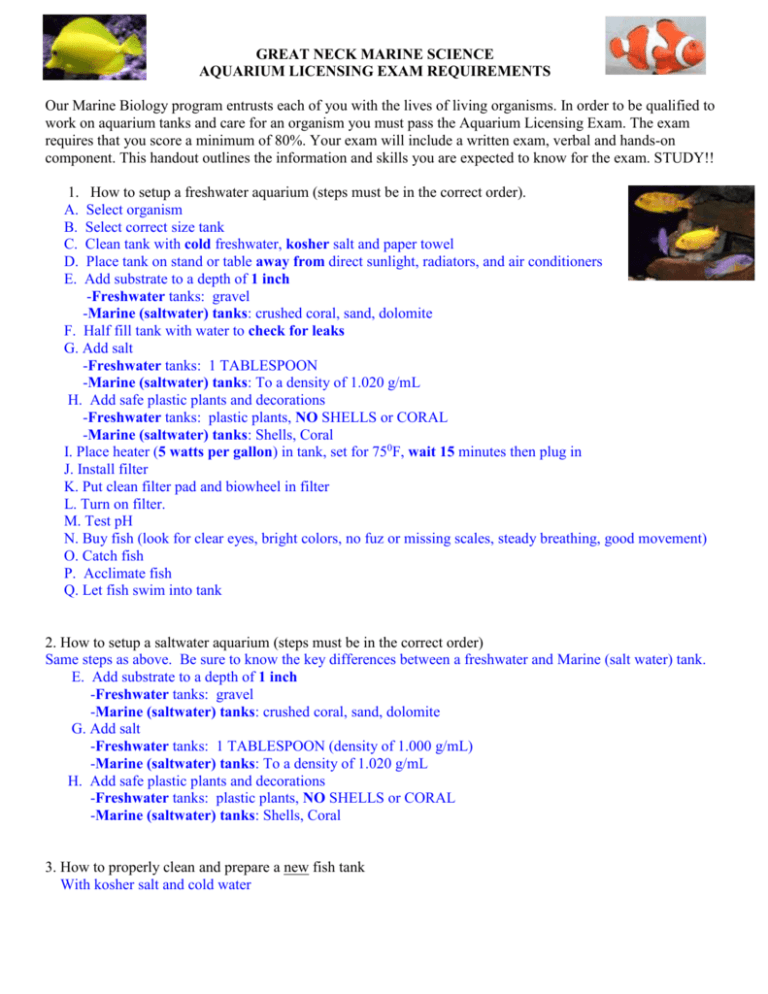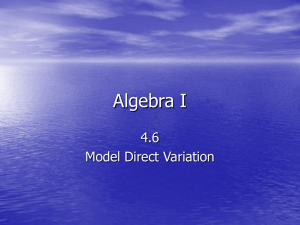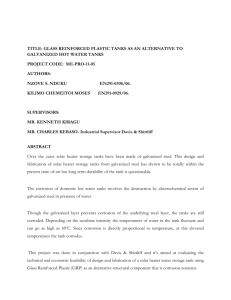Answers to Aquaria Review Sheet
advertisement

GREAT NECK MARINE SCIENCE AQUARIUM LICENSING EXAM REQUIREMENTS Our Marine Biology program entrusts each of you with the lives of living organisms. In order to be qualified to work on aquarium tanks and care for an organism you must pass the Aquarium Licensing Exam. The exam requires that you score a minimum of 80%. Your exam will include a written exam, verbal and hands-on component. This handout outlines the information and skills you are expected to know for the exam. STUDY!! 1. A. B. C. D. E. How to setup a freshwater aquarium (steps must be in the correct order). Select organism Select correct size tank Clean tank with cold freshwater, kosher salt and paper towel Place tank on stand or table away from direct sunlight, radiators, and air conditioners Add substrate to a depth of 1 inch -Freshwater tanks: gravel -Marine (saltwater) tanks: crushed coral, sand, dolomite F. Half fill tank with water to check for leaks G. Add salt -Freshwater tanks: 1 TABLESPOON -Marine (saltwater) tanks: To a density of 1.020 g/mL H. Add safe plastic plants and decorations -Freshwater tanks: plastic plants, NO SHELLS or CORAL -Marine (saltwater) tanks: Shells, Coral I. Place heater (5 watts per gallon) in tank, set for 750F, wait 15 minutes then plug in J. Install filter K. Put clean filter pad and biowheel in filter L. Turn on filter. M. Test pH N. Buy fish (look for clear eyes, bright colors, no fuz or missing scales, steady breathing, good movement) O. Catch fish P. Acclimate fish Q. Let fish swim into tank 2. How to setup a saltwater aquarium (steps must be in the correct order) Same steps as above. Be sure to know the key differences between a freshwater and Marine (salt water) tank. E. Add substrate to a depth of 1 inch -Freshwater tanks: gravel -Marine (saltwater) tanks: crushed coral, sand, dolomite G. Add salt -Freshwater tanks: 1 TABLESPOON (density of 1.000 g/mL) -Marine (saltwater) tanks: To a density of 1.020 g/mL H. Add safe plastic plants and decorations -Freshwater tanks: plastic plants, NO SHELLS or CORAL -Marine (saltwater) tanks: Shells, Coral 3. How to properly clean and prepare a new fish tank With kosher salt and cold water 4. The difference between a freshwater and saltwater tank. *Be able to identify tanks around the room and explain why it is freshwater or saltwater.* Factor Fresh Salt / Marine gravel Crushed coral Substrate Density 1.000 g/mL 1.020 g/mL ph 6.5-7.6 (neutral) 8.0-8.6 (slightly basic) Ammonia level 0.0 0.0 Nitrite level 0.0 0.0 Temperature 72 – 80 0F 72 – 80 0F Types of Decorations Non calcareous (plastic plants, plastic decorations) Shells, coral 5. Know the three kinds of filtration occurring in an eclipse filter system. Types of Filtration Name of equipment Explain what it does/how it works Blue pad Physical removes solid wastes and excess food Activated carbon breaks down ammonia Chemical (removes nitrogenous waste) biowheel Biological removes harmful gases 6. How to capture a fish With a small rectangular container – let fish swim into the container 7. How to acclimate a fish to a new tank Float bag with fish in tank Add water from tank into the bag Let fish swim out of bag into tank 8. How to install a heater Place in tank, set temperature to 72 – 75 degrees Fahrenheit Wait 15 minutes Then plug in 9. How to feed a fish 3 flakes each feeding, remove excess ***Remember a fish’s stomach is about the size of its EYE*** 10. The purpose of plastic plants and decorations in a tank Provide places for fish to hide and feel safe, or lay eggs 11. How to measure and adjust density of tank water Measure using a HYDROMETER Adjust density -too low ADD SALT (example for salt water tank lower than 1.020 g/mL) -too high ADD FRESH WATER (example for salt water tank higher than 1.020 g/mL) 12. How to conduct a ph test, ammonia test, nitrite test (know what the levels should be for both fresh and salt water) -Follow directions in kit Results for tests Test pH Ammonia level Nitrite level Freshwater 6.5-7.6 (neutral) 0.0 0.0 13. How to do tank maintenance / water change -Change 20% of water each month -Use a siphon -Clean gravel -Add aged water 14. The purpose of a water change Remove Toxins Replace trace minerals 15. How to select a tank and where to place it By size and behavior of fish Away from direct sun and radiators 16. How to set up wires With a drip line Marine (Saltwater) 8.0-8.6 (slightly basic) 0.0 0.0 Additional Information Be as detailed as possible. You should also be able to draw a diagram/picture for certain procedures. Other Things to know: -how much time it takes for certain steps *How much 1 gallon of water weighs 8lbs/gallon *How many watts of heat per gallon of water. 5 watts/gallon EXTRA INFO!! *Be able to identify if the following fish are salt water or freshwater domino damsel-salt water clown fish-salt water tiger barb- fresh water *Know how fish waste (ammonia) is broken down AmmoniaNitriteNitrate * Exam begins Friday, October 12th. * Extra help is always available Thursday and throughout the day/before/after school by appointment. * Begin STUDYING, use your notes as well as the tanks and organisms within and Mr. Krauz’s webpage! Krauz’s Marine Biology Webpage: http://www.greatneck.k12.ny.us/GNPS/SHS/index.htm check the links. GOOD LUCK





